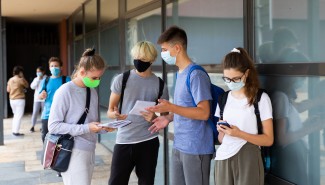Adolescent drug use before and during U.S. national COVID-19 social distancing policies

During the COVID-19 pandemic, countries around the world have introduced lockdown restrictions and social distancing measures to reduce the spread of the virus. Researchers are keen to understand how these policies and new measures have influenced drinking behaviours within particular groups. The drinking behaviour of adolescents has been of particular interest with researchers predicting the following outcomes in response to the introduction of social restrictions
1) Constriction of Supply- substance use prevalence and availability will be substantially lower
2) Constriction of Use Opportunities- adolescent substance use declines as a result of fewer substance use opportunities
3) Persevering- Adolescents may increase efforts to access and use substances in the face of restrictions
4) No changes during social distancing- availability and prevalence of adolescent substance use remains the same
This study examines data collected from 12th-grade students through the Monitoring the Future (MTF) survey.
Results found:
- Perceived availability of marijuana and alcohol declined during the pandemic
- Perceived availability of vaping devices also declined along with the prevalence of vaping.
- The prevalence of adolescent marijuana and alcohol use did not significantly change during the pandemic.
This highlights that, despite supply restrictions, prevalence does not change- a result that indicates support for the persevering hypothesis. On the other hand restriction of vape device supply was linked with a reduction in use, suggesting that hypothesis one might explain changes in adolescent vaping in the US during Covid-19.
The researchers conclude that their findings need to be taken into account when examining the relationship between supply and use as they would suggest a supply-side approach to the reduction of adolescent alcohol and marijuana use is perhaps not effective.
